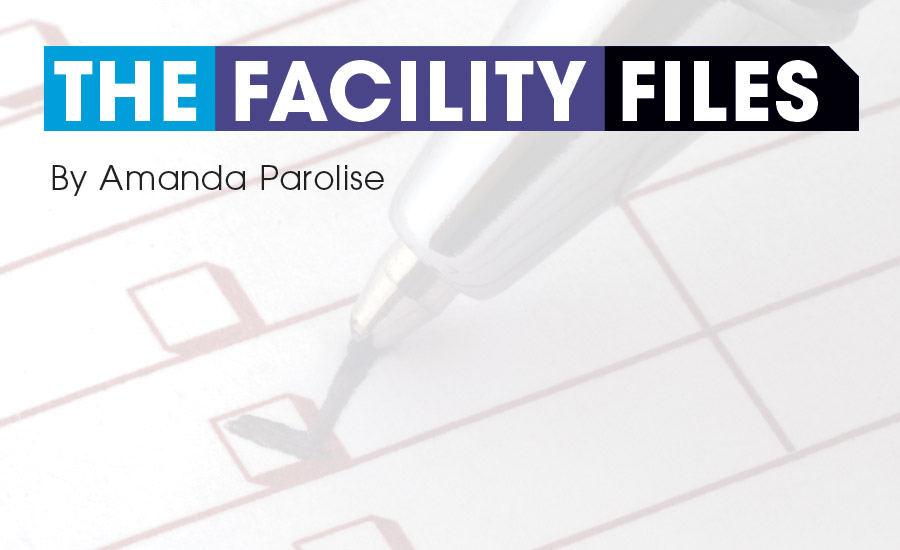This month’s Facility File will focus on the B2B May test for an existing datacom room located within a 50,000-square-foot medical records office building. The existing datacom room is being expanded from 10,000 square feet to 12,000 square feet. This existing interior room has a class A1 environment and shall remain class A1 with the expansion project. The room shall remain at 78ºF +/- 2ºF and 40% rh +/- 5%.
As a rule, owners and operators of large datacom spaces are very knowledgeable about the HVAC infrastructure that is required to assure the correct space environment. Still, it would be very beneficial for these individuals to read Chapter 19 (Data Centers and Telecommunication Facilities) in the 2015 ASHRAE Handbook — HVAC Applications to refresh their knowledge of ASHRAE’s guidelines when preparing to authorize the design of a datacom room expansion.
The owner’s facility management group should also read chapters 36-43 of the 2015 Handbook to assist in preparing the operation and management design guidelines. This information, combined with the owner’s own knowledge of operating this type of room, will assist the team in understanding intricacies of owning, operating, and managing this datacom expansion project. It’s also recommended that the owner-design team read Chapter 59 (HVAC Security) of the same ASHRAE handbook and Chapter 18 (Variable Refrigerant Flow) in ASHRAE Handbook — HVAC Systems and Equipment to become familiar with this type of application.
For this May B2B, the project delivery method is integrated project delivery (IPD) working together with owner-designer-builder based on a building program construction budget, so the general contractor and his in-house engineering and estimator, along with the prime subcontractors, will be involved in the design phase and be able to contribute to the contract documents. In the construction phase, the O&M staff will want to revisit the issues noted above during the design phase. Next comes the startup and commissioning phases, and the O&M staff will want to be proactive in following along with the IPD team’s mechanical-electrical in-house coordinator to receive equipment training from the VRF manufacturer’s startup technician and system training using the O&M manuals and contract drawings (that will eventually become the record drawings).
In the Phase 3 Concept Development of the IPD project, the building manager and her O&M staff will want to contribute information to the design team member’s writing of the contract specification and more specifically the following activities: service contracts, parts inventory, and as-built drawings requirements. Reviewing the design documents, this O&M staff will want to be assured that equipment serviceability is adequate and safe in relationship to datacom equipment.
With all these design guidelines from ASHRAE, the IPD team, consisting of the owner; building facility manager; owner representative/commissioning and water balancing consultant (CxTAB); HVAC consultant engineer, architect, electrical, plumbing, fire protection, and security sub-consultants; general contractor; and HVAC, electrical, and plumbing sub-contractors should meet with the owner’s O&M staff to discuss specific building standards that need to be applied to this project.
For this project, the facility operation is an in-house staff and not an outsourced group. They will want to assure there is adequate contract specification requirements included pertaining O&M, training, the preventive maintenance work order system, and energy operating budget.
Once the startup has been completed and the ATC subcontractor and owner representative/third-party CxTAB consultant complete the VRF indoor unit air distribution balancing work, the HVAC subcontractor shall go through an automatic control system initial dry-run demonstration prior to the general contractor and his subcontractors demonstrating the system to the CxTAB consultant. The ATC subcontractor should also begin collecting system performance by trending pertinent HVAC system and equipment data by trending the following:
[X] Room dry bulb and wet bulb temperature [X] Supply air and return air dry bulb and wet bulb temperatures [X] Hot-aisle temperatures [X] Rack-based containment temperatures [X] Alarms [X] VRF control points [X] Offsite VRF manufacturer’s interface.
Taking the same approach as the design engineering, the owner’s O&M personnel should use a series of computer-generated touchscreen project checklists that allow her staff to confirm that the following facility files have been collected. This process should start at the beginning of construction and not at project closeout so that the facility files can be inputted into a CMMS system. Touchscreen O&M checklists should include:
[X] Equipment shop drawings [X] O&M manuals, parts list, and lubricants [X] Troubleshooting tips [X] Remote monitoring instructions.
The O&M staff should review the contractor-produced piping and sheet metal field fabrication/field coordination drawings prior to fabrication. Touchscreen service checklists should include:
[X] Location of shutoff valves, ATC valves, and refrigerant pressure gage test points [X] Refrigerant drier [X] Equipment and control devices [X] Access for servicing equipment.
The training process should include specific HVAC system and equipment training. Touchscreen training checklists should include:
[X] Equipment [X] System [X] Emergency plan [X] Automatic controls [X] Energy management.





